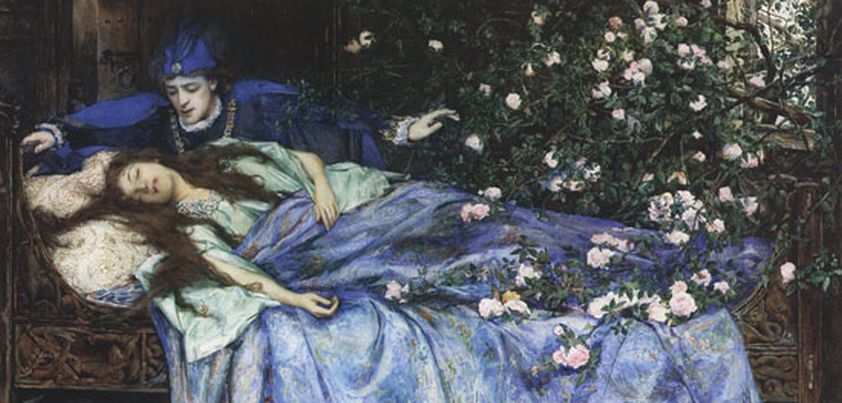 Today we have a reverse chronology of the folktales behind the classic children’s story, Sleeping Beauty. The famous kiss that woke the princess comes from the Brothers Grimm’s Briar-Rose (1812). Charles Perrault’s Sleeping Beauty in the Wood (1697) has no kiss but lots of talk, a hasty wedding followed by a night of “very little sleep”, and an added section where the prince’s mother (an Ogress) decides to make a meal of their children. Perault’s inspiration was the Giambattista Basile’s Sun, Moon and Talia (1634). Here, the king “gathers the first fruits of love” (rapes) the poor unconscious girl.
Today we have a reverse chronology of the folktales behind the classic children’s story, Sleeping Beauty. The famous kiss that woke the princess comes from the Brothers Grimm’s Briar-Rose (1812). Charles Perrault’s Sleeping Beauty in the Wood (1697) has no kiss but lots of talk, a hasty wedding followed by a night of “very little sleep”, and an added section where the prince’s mother (an Ogress) decides to make a meal of their children. Perault’s inspiration was the Giambattista Basile’s Sun, Moon and Talia (1634). Here, the king “gathers the first fruits of love” (rapes) the poor unconscious girl.
Briar-Rose Original Text / PDF (1,318 words)
Sleeping Beauty in the Wood Original Text / PDF (3,639 words)
Sun, Moon, and Talia Original Text / PDF (2,131 words)
Our Sources
Our source for Brothers Grimm stories is the Household Tales 1884 translation by British writer Margaret Hunt. The book contains all 200 Grimm folktales plus 10 legends; Briar-Rose (Dornröschen) is tale No. 50. The Grimms listed their source for the story as German writer Marie Hassenpflug.
Our source for Sleeping Beauty in the Wood was an English version of the Perrault story published in The Blue Fairy Book, one of a series of twelve collections of folk and fairy tales for children edited by Andrew Lang. This is the first book in the series, and was first published in 1889. The book contains translations of seven Perrault stories, but omits an important aspect of each: Perrault’s morals. For Sleeping Beauty, this was in the form of a rather humorous verse:
Many a girl has waited long
For a husband brave or strong;
But I’m sure I never met
Any sort of woman yet
Who could wait a hundred years,
Free from fretting, free from fears.Now, our story seems to show
That a century or so,
Late or early, matters not;
True love comes by fairy-lot.
Some old folk will even say
It grows better by delay.Yet this good advice, I fear,
Helps us neither there nor here.
Though philosophers may prate
How much wiser ’tis to wait,
Maids will be a sighing still —
Young blood must when young blood will!
Sun, Moon and Talia is a story from the “Fifth Diversion of the Fifth Day” of Giambattista Basile’s Pentamerone. Our story is from Sir Richard F Burton’s unexpurgated translation of the original, published in 1893. A PDF version of his work is available for download here.